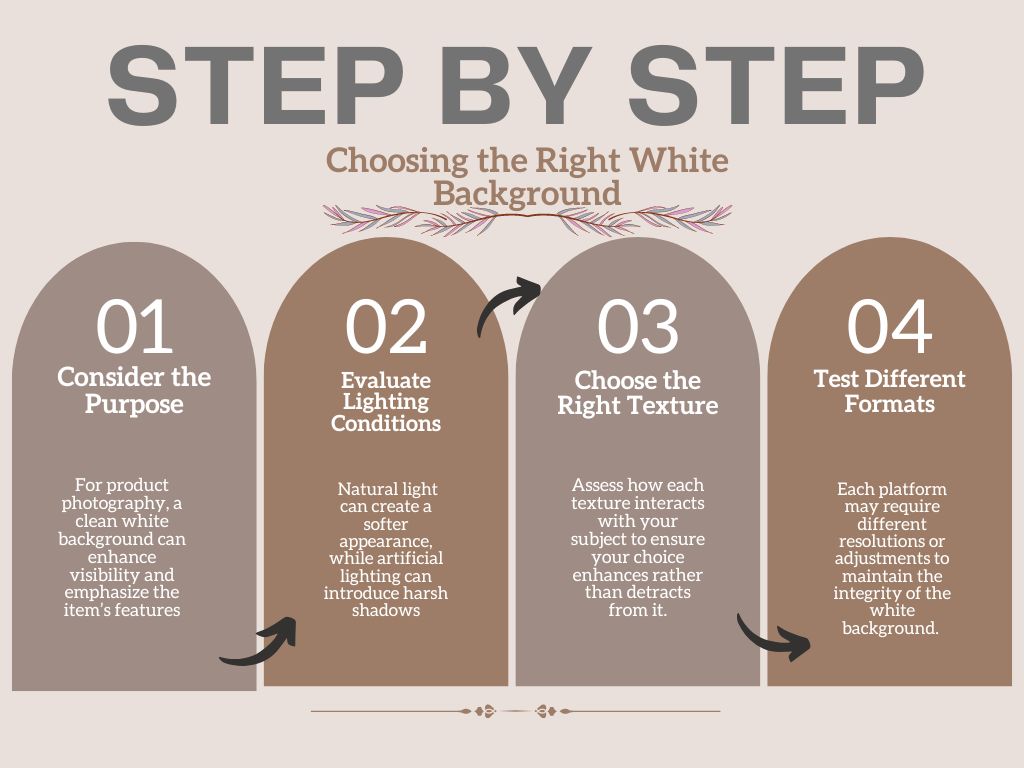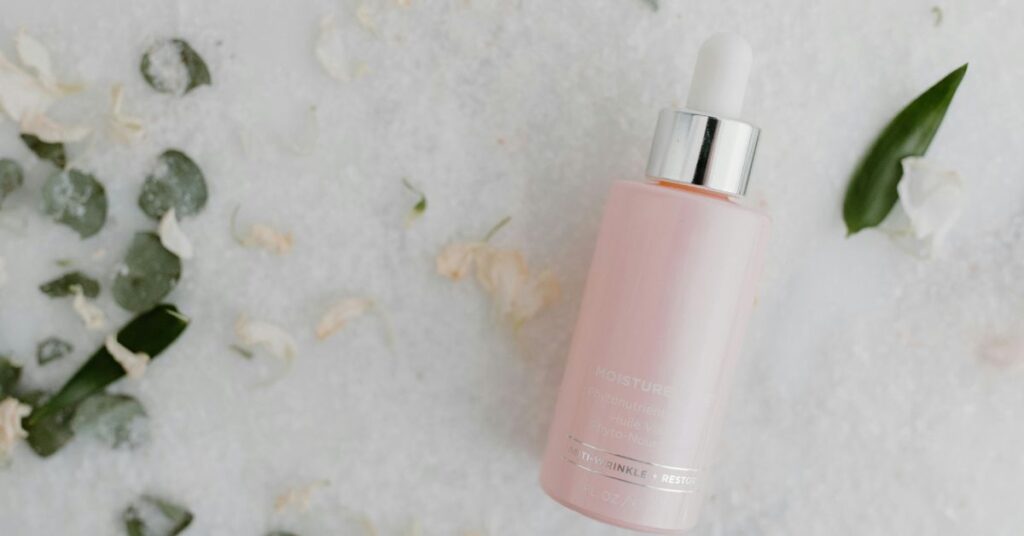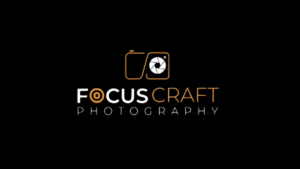Introduction to Elegant Flat Lay Photography
Have you ever wondered why some images stand out while others fade into the background? The answer often lies in the artful execution of flat-lay photography, particularly when set against a clean white background that allows elements to shine. This article will guide you through the nuances of creating elegant flat lays that not only draw attention but also tell a story about your brand or product. Prepare to discover essential tips and innovative ideas that will elevate your photography skills and make your work truly unforgettable.
Choosing the Right White Background

- Consider the Purpose: Before selecting a white background, define its intended use. For product photography, a clean white background can enhance visibility and emphasize the item’s features. However, for branding or artistic purposes, the texture and shade of white may need to be adjusted to align with your overall vision.
- Evaluate Lighting Conditions: The effectiveness of a white background can significantly depend on your lighting setup. Natural light can create a softer appearance, while artificial lighting can introduce harsh shadows. Experiment with different lighting angles to find the perfect balance that complements the white background without washing out the subject.
- Choose the Right Texture: Not all whites are created equal. Matte finishes can absorb light and reduce glare, making them ideal for professional settings, while glossy backgrounds reflect light, creating a more dynamic feel. Assess how each texture interacts with your subject to ensure your choice enhances rather than detracts from it.
- Incorporate Subtle Variations: A pure white background can sometimes feel sterile. Introducing slight variations, like an off-white or textured backdrop, can add depth and warmth without overwhelming the focus of your project. This small adjustment can create a more inviting visual experience.
- Test Different Formats: Finally, consider how your chosen white background will appear across various formats whether in print, online, or on social media. Each platform may require different resolutions or adjustments to maintain the integrity of the white background. Always preview your work in its final format to ensure consistency and appeal.
Essential Props for Stunning Flat Lays

To create stunning flat lays that captivate the viewer’s attention, essential props play a pivotal role in enhancing the overall composition. A minimalist white background serves as a perfect canvas, allowing colors and textures to pop without distraction. Incorporating subtle elements like textured fabrics or delicate paper can add depth and intrigue, drawing the eye toward the focal point of your arrangement. Consider using organic materials such as leaves or flowers; their natural imperfections introduce an element of warmth and authenticity that contrasts beautifully with the starkness of a white backdrop.
In addition to decorative items, practical props like stylish tools or stationery can elevate your flat lay from ordinary to extraordinary. For instance, a sleek pen beside an open notebook not only adds functionality but also tells a story of creativity and inspiration. Layering different heights and shapes such as stacked books or tiered dishes creates visual interest, guiding the viewer’s gaze across the entire composition. Ultimately, the right combination of props transforms a simple flat lay into a compelling visual narrative, inviting viewers to engage with the scene and envision themselves within it.
Lighting Techniques for Flat Lay Success
Mastering lighting techniques is crucial for achieving striking flat lays that pop against a white background. Natural light remains an undisputed favorite among photographers; positioning your setup near a window during golden hour can infuse your images with a warm, ethereal glow. However, to elevate your flat lay game, consider utilizing a reflector to bounce light onto the subject. This technique not only minimizes harsh shadows but also adds depth and dimension, creating a more dynamic visual experience.
For those venturing into artificial lighting, softbox lights are an excellent investment. They diffuse light beautifully, ensuring even coverage across your flat lay without overwhelming brightness. Experimenting with different angles can yield surprisingly diverse results; try placing your light source at varying heights and distances to discover the most flattering setup for your specific items. Don’t forget to incorporate colored gels or filters to introduce subtle hues that can complement or contrast with your white background, adding an unexpected twist that captivates the viewer’s attention.
Composition Tips for Eye-Catching Arrangements
Creating eye-catching arrangements begins with the strategic use of a white background, which serves as a canvas that amplifies the vibrancy of your elements. A minimalist approach allows the colors and textures of your objects to shine without distraction. Consider incorporating varying heights and sizes within your composition; this not only adds visual interest but also guides the viewer’s eye through the arrangement. Layering items with contrasting shapes can further enhance this dynamic, as it creates depth and a sense of movement.
In addition to physical arrangement, think about the emotional resonance of your composition. Each element should tell a story, and when placed against a white background, the narrative becomes clearer and more impactful. Use negative space to your advantage; it can evoke feelings of tranquility and focus. Finally, don’t shy away from experimenting with asymmetry this often yields unexpected yet delightful results that captivate the audience and invite them to engage with your work on a deeper level.
Color Palettes that Enhance Elegance
The interplay of color can transform a space from mundane to magnificent, particularly when paired with a white background. Utilizing a palette of soft pastels think blush pinks, mint greens, and lavender can evoke a sense of serenity and sophistication. These hues, when layered against a crisp white backdrop, allow for an ethereal quality that enhances light and depth in any room. The subtlety of pastels invites tranquility, making it an ideal choice for spaces dedicated to relaxation, such as bedrooms or reading nooks.
On the other end of the spectrum, a monochromatic scheme featuring deep jewel tones like emerald green, sapphire blue, and rich burgundy can convey an air of opulence. When these colors are juxtaposed with a white background, they create striking focal points that command attention without overwhelming the senses. This bold contrast not only accentuates architectural features but also brings an element of drama, perfect for dining rooms or formal living areas where elegance is paramount. By thoughtfully selecting colors that resonate with your style while maintaining harmony with a white canvas, you can cultivate an atmosphere that is both inviting and refined.
Editing Tips for a Polished Look
To achieve a polished look in your writing, consider the power of a white background. This simple yet effective choice not only enhances readability but also allows your content to shine without distraction. When editing, ensure that your text contrasts well with the white background; use dark fonts to create a striking visual appeal. This contrast not only aids in clarity but also guides the reader’s eye through the flow of your narrative, making each paragraph feel intentional and well-structured.
Another vital tip is to embrace the art of brevity. In a world overflowing with information, concise writing stands out. Aim to eliminate unnecessary words and jargon that can clutter your message. Instead, focus on crafting impactful sentences that convey your ideas succinctly. Additionally, varying your sentence structure can keep readers engaged, creating a rhythm that complements the clean aesthetic of a white background. Remember, clarity is your ally; every word should serve a purpose, contributing to a seamless reading experience.
Showcasing Your Work on Social Media
Showcasing your work on social media is not just about posting images; it’s about curating a visual narrative that speaks to your audience. Utilizing a clean white background can elevate your presentations, providing a crisp canvas that allows your creations to take center stage. This minimalist approach draws the viewer’s eye directly to your work, eliminating distractions and enhancing the perceived value of your art or product. By strategically utilizing negative space, you invite viewers to engage more deeply, prompting them to appreciate the details and craftsmanship involved.
Instead of merely displaying images, consider sharing the journey behind each piece what inspired it, the challenges faced, and the techniques employed. This context not only enriches the viewer’s experience but also fosters a sense of intimacy and authenticity. Pairing your visuals with thoughtful captions can create a compelling dialogue, transforming casual viewers into loyal followers who resonate with your creative ethos. In an ever-saturated digital landscape, presenting your work against a white background with a narrative twist can set you apart and leave a lasting impression.
Mastering the Art of Flat Lays
Mastering the art of flat lays requires more than just a keen eye for aesthetics; it demands a thoughtful approach to composition and storytelling. A white background serves as a blank canvas, enhancing the vibrancy of your chosen objects while providing a clean and sophisticated backdrop that draws the viewer’s attention. The strategic placement of items can create a visual narrative, inviting the audience to explore the relationships between the elements.
Lighting plays a crucial role in achieving that coveted polished look in your flat-lay photography. Natural light is often your best ally, allowing colors to pop without harsh shadows detracting from the overall image. However, experimenting with artificial lighting can yield striking results, especially when paired with a white background that reflects and diffuses light evenly. Don’t shy away from creative experimentation try unconventional items or unexpected color combinations to differentiate your flat lay from the crowd. Ultimately, mastering this art form is about finding your unique voice and letting it shine through every carefully curated arrangement.


